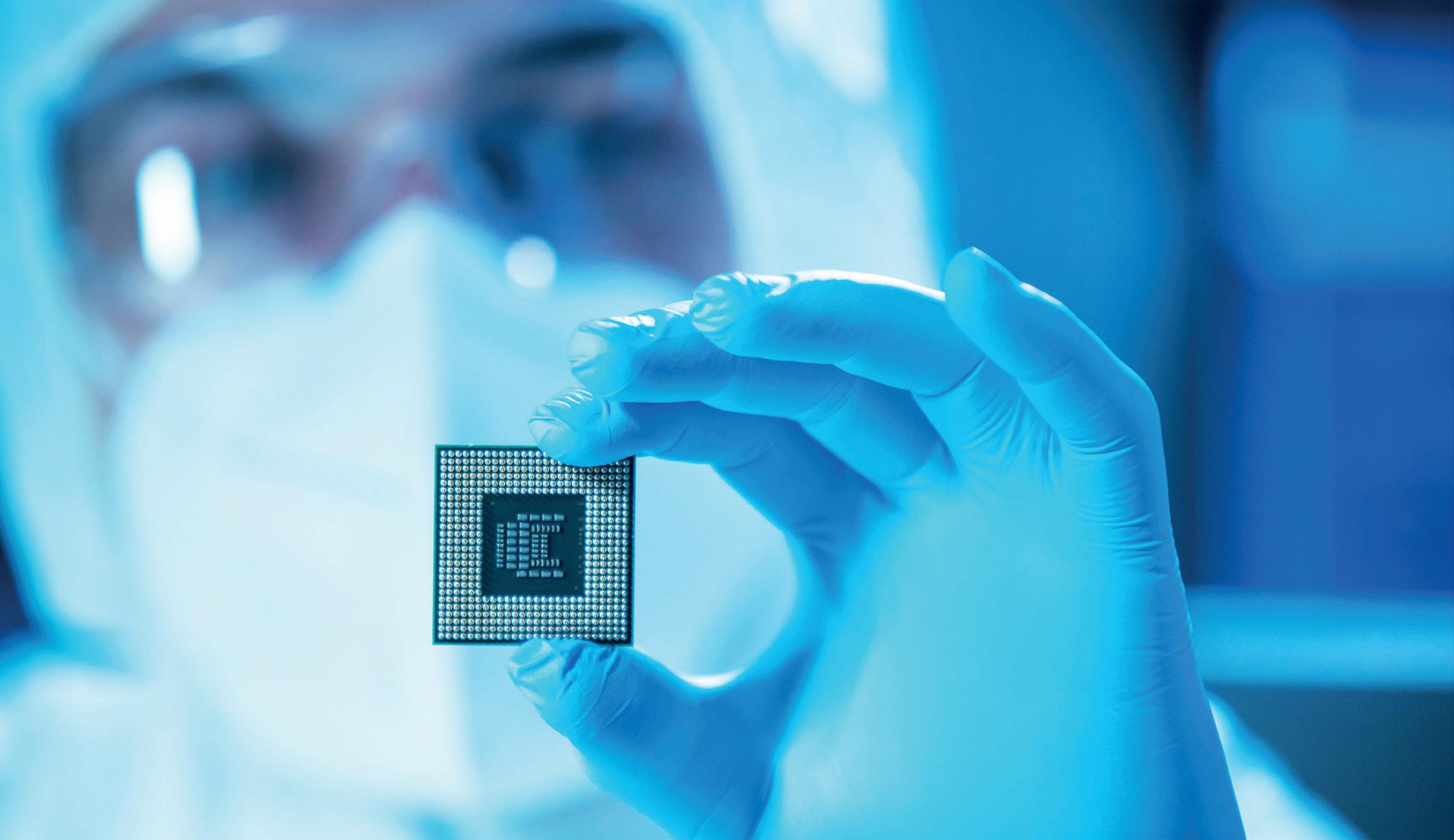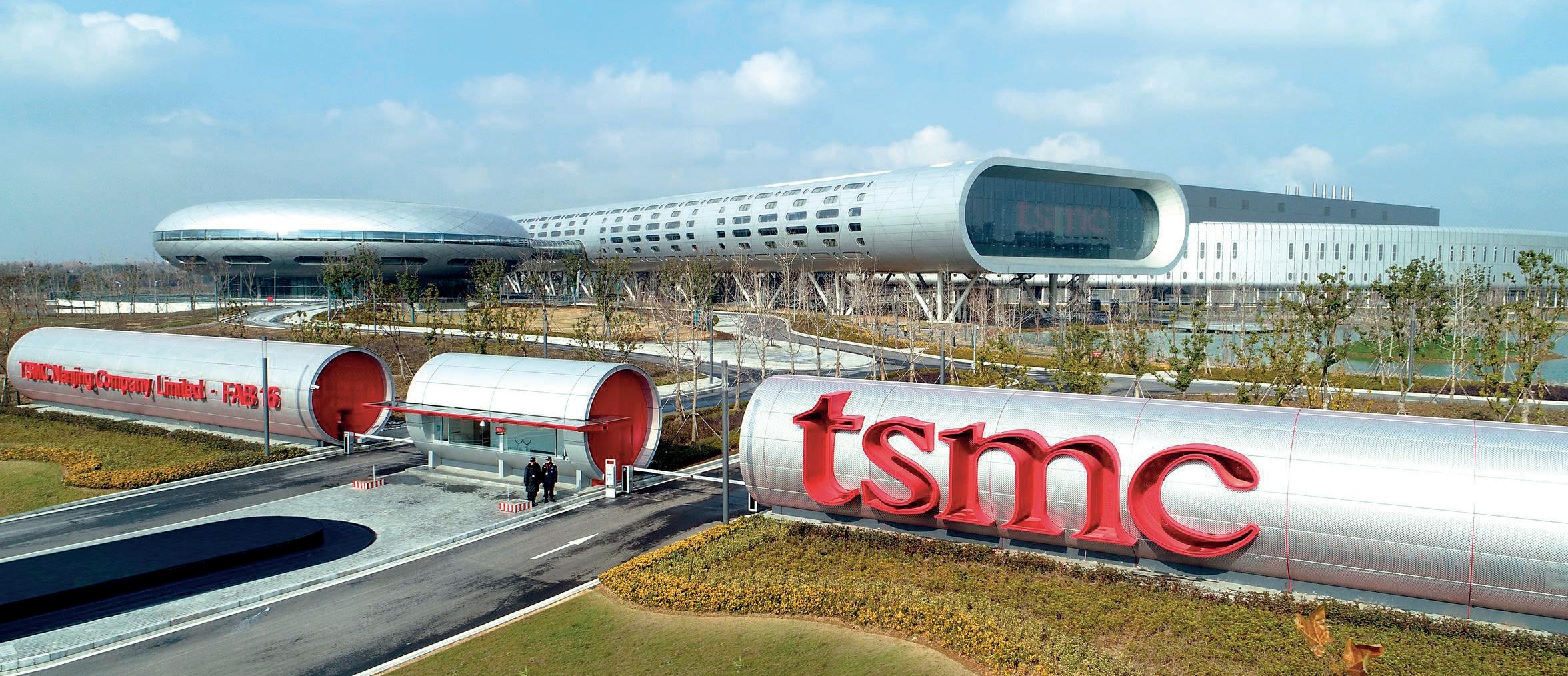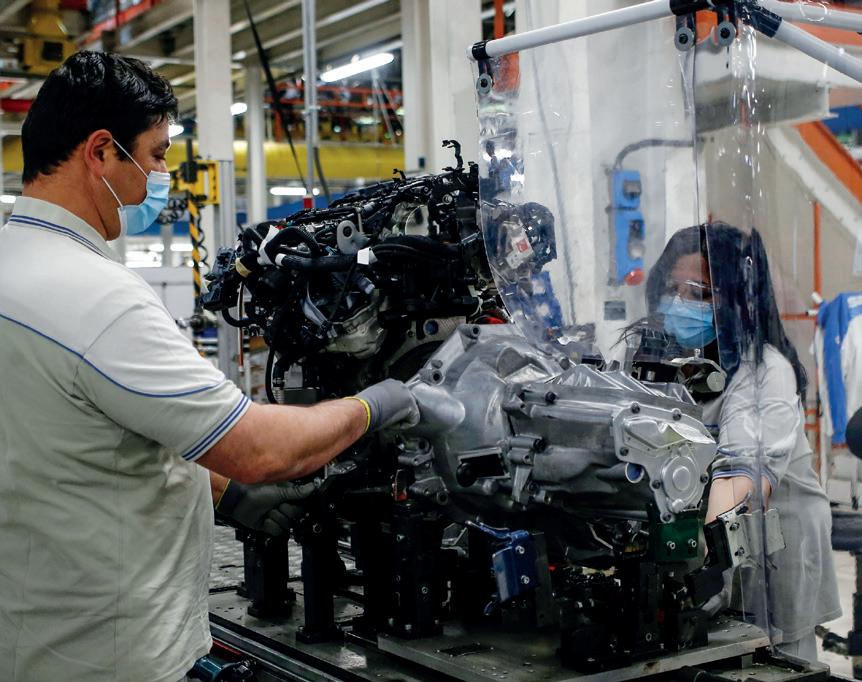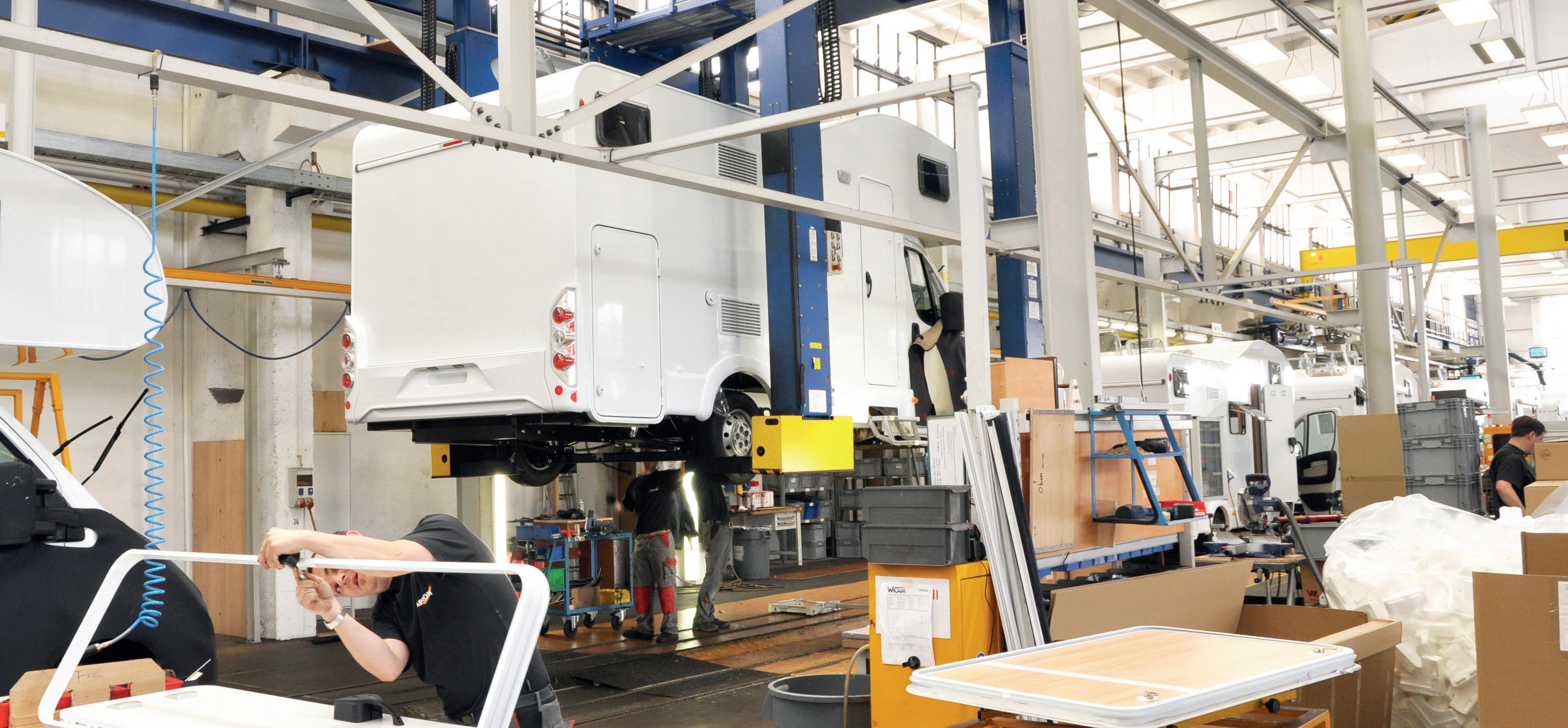
9 minute read
Chip shortage
Production difficulties still dragging on
Problems with the procurement of chips and raw materials, combined with the rising costs of transport and energy, continue to put a strain on our manufacturers. In response many have had to pause production, and raise prices
Semiconductor chips have become a key element in this complex panorama, because the large suppliers have become more oriented to meet the needs of the consumer electronics market than those of the automotive industry. Early in 2021 it looked as though the chip shortage might ease sometime in 2022. It now looks as though that forecast was optimistic. Here we attempt to unravel what’s really going on.



Effects of COVID-19
The situation is now complex, but it is clear that COVID-19 was the major precipitating factor. As COVID-19 regulations began to bite, it wasn’t just the RV factories and dealerships that were forced to close. The car industry suffered the same fate. With showrooms and factories closed, orders for new vehicles collapsed. Manufacturers responded by cancelling orders for semiconductor chips. In the meantime, with so many people stuck at home, the demand for computers, games consoles and household appliances went through the roof. According to market intelligence provider IDC, in the fourth quarter of 2020, traditional computer sales were up 26.1% compared to the previous year. The chipmakers responded by ramping up production of these items, which more than replaced the lost automobile orders. As a result, demand began to exceed supply. The problem with semiconductor chips is that they can’t me made quickly. It’s a complex process that takes time. According to Bloomberg “Manufacturing a chip typically takes more than three months and involves giant factories, dust-free rooms, multi-million-dollar machines, molten tin and lasers.” Indeed, there’s a joke in the industry that “It’s not rocket science – it’s much more difficult”. A chip making plant, also known as a foundry, can cost billions of dollars to set up. For example, a recent state of the art factory in Taiwan was completed at a cost of $19.5 billion. This explains why the number of chipmakers globally is limited and dominated by companies from the United States, Taiwan, South Korea, Japan and Netherlands. By the summer of 2020, RV and automobile manufacturing plants were finding COVID-19 safe ways of resuming production, albeit at lower levels than before. At the same time an increasingly inoculated public quickly realised that RVs could provide the perfect socially distanced holiday, and demand soared. With it, the need for base vehicles and new cars returned quickly too, making those cancelled chip orders look like a big mistake. However, in a world of supply shortages chipmakers had little sympathy for those who had been quick to cancel orders, only to want to reinstate them the very moment the tide turned. With all the semiconductor plants running at capacity, the seeds of the global chip shortage were sown. Whilst COVID-19 had undoubtedly been the main factor up to this point, other factors were beginning to creep in. From now on things would only get worse.
TSMC’s Fab 16 plant in Taiwan © Taiwan Semiconductor Manufacturing Co.


Non-COVID-19 factors
Trade sanctions
Just as the COVID-19 pandemic began to take hold, the United States ramped up tensions with China over trade, particularly electronics. In September 2020, the US imposed restrictions on China’s largest chip manufacturer, Semiconductor Manufacturing International Corporation (SMIC), which made it harder for them to sell to companies with American ties. Those companies were forced to look elsewhere but found that other chip makers were already at full capacity. Another casualty was Huawei, who were blacklisted by the US government over fears of collusion with the Chinese Government. In November 2020 it prompted Huawei to announce plans for a dedicated Shanghai chip plant to get around the US restrictions. They also took the opportunity to blame the US for the global chip shortage.
Severe weather
In February 2021 the Austin, Texas plants of Samsung and NXP Semiconductors were forced to close for a period through lack of power following a severe winter storm. Sudden power outages are a nightmare for chip plants, which are designed to run 24 hours per day. As a result, several months of production were lost. It just so happens that NXP is a major supplier to the automotive industry. Meanwhile Taiwan experienced its worst drought for half a century, leading to problems for chip producers, who are large consumers of water. Taiwan is the world’s largest chip manufacturer with the Taiwan Semiconductor Manufacturing Company (TSMC) accounting for more than 50% of the global wafer foundry market. It needs around 63m litres per day, some of which is used up to three times, before being discarded.

Factory fires
During 2020 and 2021 two Japanese factories suffered fires that put them out of production for up to 100 days. One (Renesas) supplies 30 percent of the global market for microcontroller units used in cars.
Procuring investment
Chip factories are extremely expen-
Effects on the automobile industry
All the volume producers have been severely impacted by the chip shortage with most forced to stop production on one or more lines for weeks at a time. Perhaps the most noteworthy of these for the RV industry was the suspension of production at Stellantis’ Sevel plant in Atessa, Italy at the end of August. The plant produces the Fiat Ducato, Peugeot Boxer and Citroen Relay/Jumper van chassis so widely used for RVs, and this one stoppage alone caused the loss of some 1,200 vehicles per day. Other plants belonging to Stellantis were also affected. Although production has resumed at many plants, overall levels remain down. According to Stellantis Q3 results, consolidated shipments were down 27% vs. Q3 2020 pro forma, primarily due to Q3 2021 production losses as a result of unfilled semiconductor orders. Stellantis CEO, Carlos Tavares, has said he thinks the shortages
could continue into next year whilst Intel has said that the chip shortage could get worse before it gets better. Intel believes it will take a year or two for supplies to normalise. Another manufacturer (who asked not to be named) told us that all its customer groups were affected by the current delays. In some cases, this manifested itself as equipment restrictions in certain models. The intention was that the missing items be retrofitted when they became available. However, due to the ongoing high volatility, it was difficult to say how the situation would develop. The company went on to say that, despite the great flexibility of its plants around the world, they could not assume that they would be able to make up the production shortfalls, which were caused by the temporary production reductions, until the end of this year. According to the European Automobile Manufacturers’ Association (ACEA) 10.8 million passenger cars were made in Carlos Tavares, the European Union in CEO Stellantis 2020, a drop of 23.3% compared to 2019. In the case of vans, such as those used for the production of RV’s, there was a decline of 17.6% in 2020 compared to 2019. The big question is ‘where does all this leave the RV industry?’
sive, take a long time to come onstream, and need to run at 70%+ capacity to make a profit. Investing in a factory now, which might not come onstream until 2024, when the chip shortage may be over, can be seen as risky at best. Whilst this view is no doubt holding back some of the smaller players, governments are cottoning on to the fact that investments in their semiconductor industries can be money well spent. For example, in the US, in March 2021, the Biden administration has earmarked $50 billion of a $2 trillion infrastructure investment package for the semiconductor industry. Meanwhile the South Korean government has announced a huge $451 billion investment to help its semiconductor industry. These announcements had the effect of boosting confidence. In September 2021, Intel announced a US$20 billion plan to expand its advanced chip making capacity in Arizona. This followed on from TSMC announcing US$12 billion plan to build and operate a semiconductor fabrication factory in Arizona. Construction was underway

Effects on the RV industry
In both Europe and the US registrations of new vehicles dropped dramatically in the first half of 2020. This was easily explained by people staying at home and most dealerships shut. However, in the second half of 2020, with restrictions lifting, the demand for RVs soared as people sought the perfect socially distanced holiday. In the US for example, The RV Industry association reported that suppliers were seeing as much as 170% increase in first-time buyers. In Europe, the CIVD reports that registrations of new motorhomes were up 20.8% in 2020 compared to 2019 with Germany leading the charge at 44.8%. On the other hand, registrations of new caravans were down 2.7% in the same period. Nevertheless, it didn’t take long for supplies to become tight and delivery times to go way out. Twelve months is now typical. This is a real issue for first time buyers and the challenge we face now is how to stop them walking away.

in June 2021 with the first chips due to roll off the production line in 2024. They will use the company’s cutting edge five-nanometre technology. In parallel with this high-level investment, we are beginning to see a re-alignment of supply chains, with the bigger customers developing their own chips or setting up dedicated suppliers. Apple, for example, with its ground breaking M1 chip has combined many previously individual functions into one ‘system on a chip’. Google too is believed to be developing its own CPU.
Conclusion
The term ‘perfect storm’ has become much over-used in recent years but it does very well sum up what is happening at the moment. One can’t help wondering what the situation might have been if those automotive semiconductor orders had not been cancelled in early 2020. However, the fact remains that they were, and the rest as they say, is history. One thing we can be sure of is that the auto makers will be seeking greater control over their supply chains, they won’t want to be caught with their pants down again. Hyundai’s COO, José Muñoz has said he hopes the company will develop its own semiconductors. It’s certainly a logical move, especially if other auto makers join in to spread the cost. There may also be reviews of purchasing policies – it seems those with the most aggressive policies have suffered the most, probably because they have engendered the least sympathy from the chip makers. The one thing that pretty much everyone agrees on is that we’re not out of the woods yet and it will be some time before we are.










